1. Overview of Energy Resources
Energy resources are broadly divided into two categories: non-renewable and renewable resources. Non-renewable energy resources require hundreds to millions of years to form, which means they get used at a far faster rate than they can be replaced. Non-renewable energy includes coal, oil, natural gas, and nuclear energy. Renewable energy resources can be replenished anywhere from immediately to within months or years depending on the resource type. Renewable energy resources include biomass, solar, wind, geothermal, hydroelectric, wave, and tidal energy.
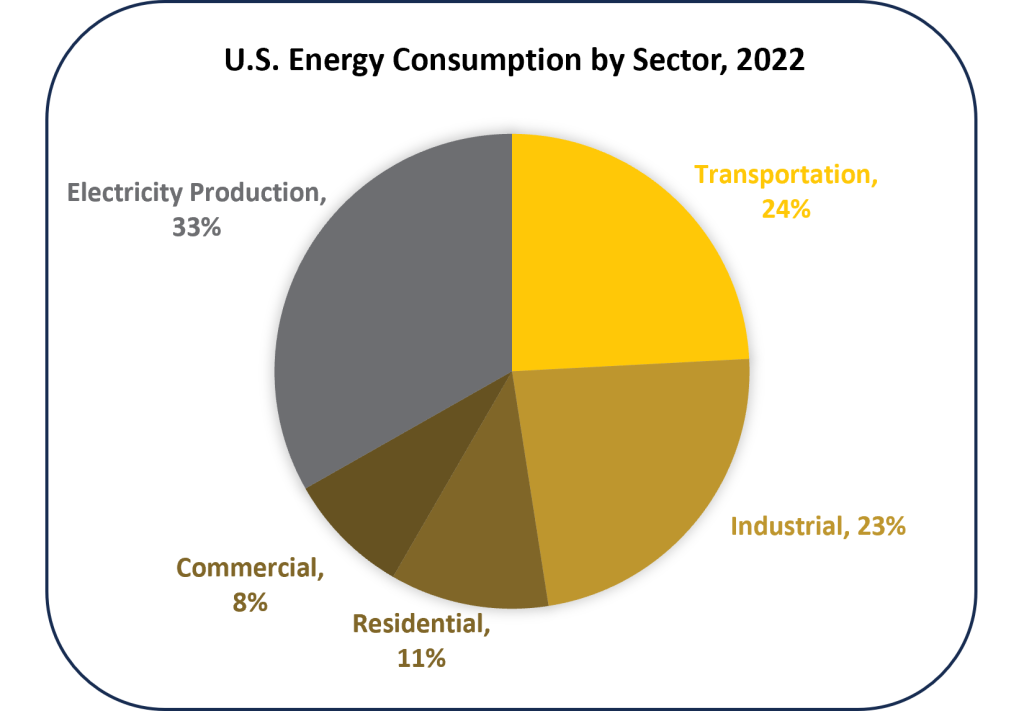
The main sectors that use energy are electrical power, transportation, industrial, residential, and commercial. Within the U.S., the electricity production, which is ultimately sold for use in the other sectors, is the largest portion of energy consumption followed by transportation and industrial consumption, which are roughly equal, then residential and commercial consumption (Figure 3C.1.1).
The make-up of the energy sources (i.e., the percentage of coal, natural gas, renewables, etc.) varies based on sector. For example, the transportation sector is dominated by the direct use of petroleum with minimal direct use of natural gas or renewables, and no direct use of coal or nuclear. There is a small portion of electricity used by transportation, which means natural gas, renewables, coal, and nuclear are used indirectly in transportation through this route (Figure 3C.1.2).
Electricity in the U.S. uses relies heavily on fossil fuels but very little is petroleum, with natural gas and coal making up more than half of all electricity consumed; roughly 57% of electricity in the U.S. was from fossil fuels in 2022. Nuclear energy contributes 21 % and all renewable sources combined contribute the remaining 21% (Figure 3C.1.2).
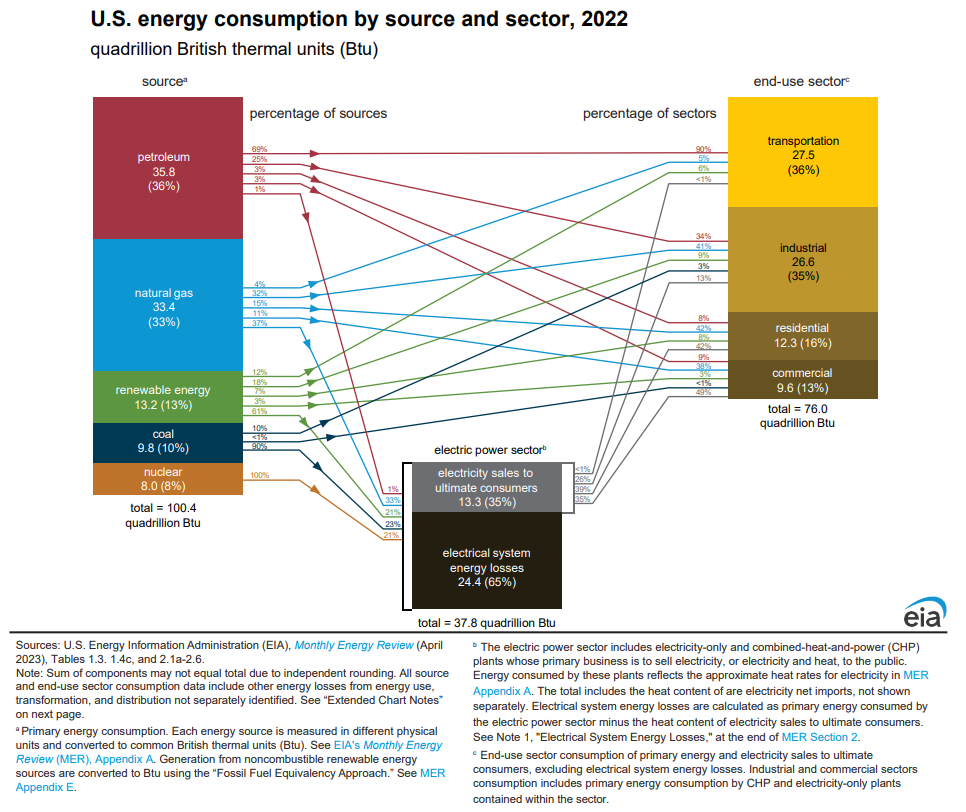
The two figures above provide a snapshot of energy consumption in 2022, but it is also useful to view the changing trends in energy sources over time. Figure 2C.1.3 shows how the various sources of U.S. energy have changed from 1950 through 2022. Coal usage reached a peak in the early 2000s and has declined since then, but this is not because coal energy was replaced with renewables. Instead, there has been a strong shift towards a different fossil fuel, and natural gas has mostly replaced coal energy, resulting in the rapid rise of natural gas consumption from the late 2000s through today. Nuclear energy only began in the late 1950s but remains low relative to the other non-renewable energy sources, although larger than any individual renewable source, which are combined and shown as a single line on this graph. An increase in renewable energy has replaced some of the declining coal energy and this has come mainly from an increase in wind and solar sources. The trend of coal consumption declining and being replaced by natural gas and renewables is projected to continue.
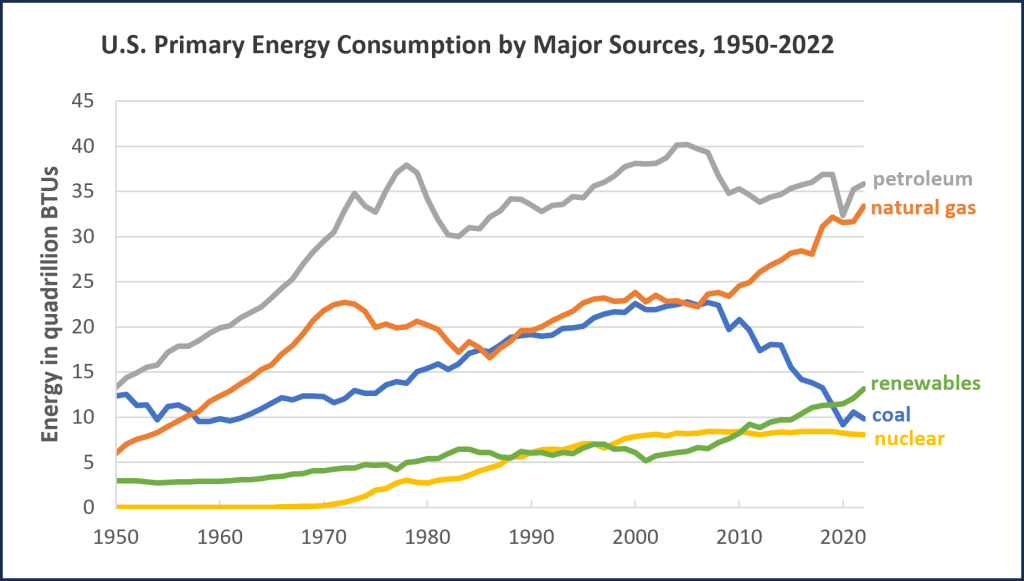
While the share of U.S. energy production from renewable energy is growing, its current share at 13% in 2022 of total U.S. energy consumption is slightly higher than the global average of 12.3% in 2022, it is still far below the European average of 22.5% in 2022. Iceland is the single top user of renewable energy in Europe and the world with close to 90% of its total energy from renewables, namely hydroelectric and geothermal (Figure 3C.1.4). Of this, close to 100% of electricity and heating are from renewables and the main use of non-renewable energy is as transportation fuels.
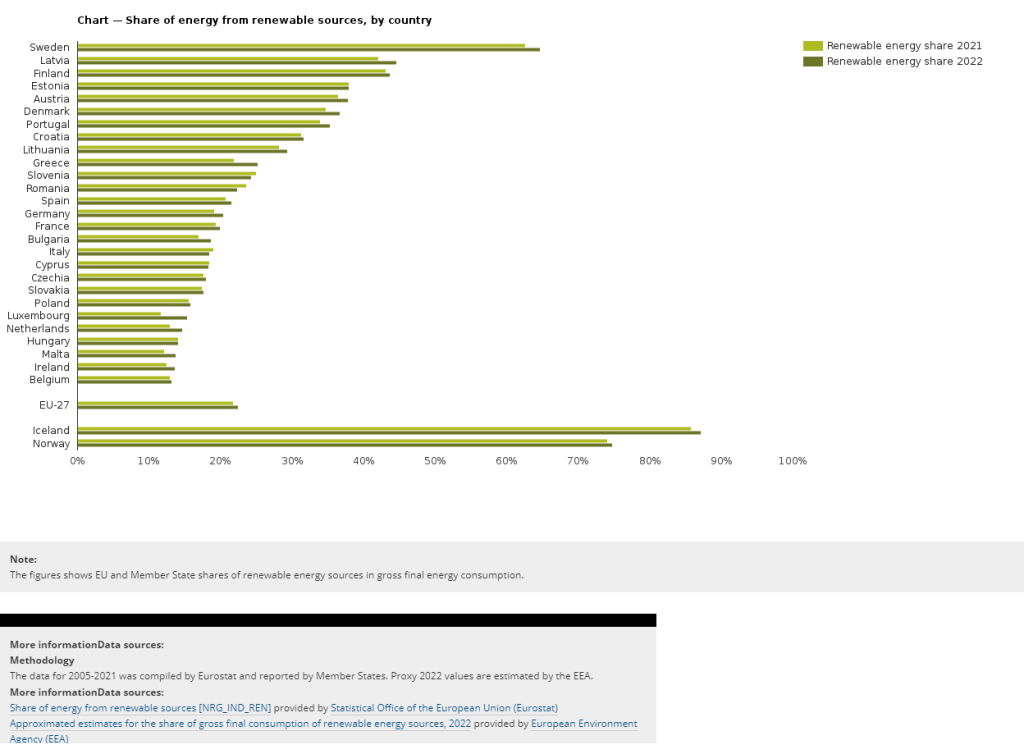
Figure 3C.1.5 shows the breakdown of energy resources used in the United States in 2022, with the share of each renewable energy type depicted as well. Biomass and wind energy are the most used renewable sources in the U.S. at 37% and 29%, respectively, of renewable energy.
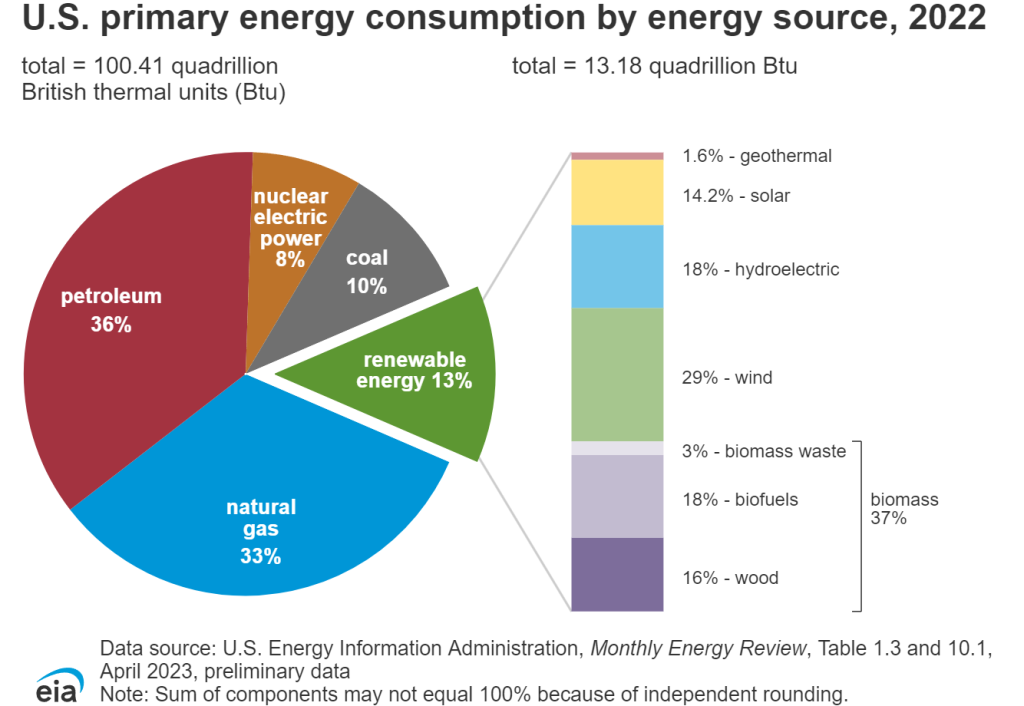
As a major driver of climate change, human combustion of fossil fuels is a focus for any climate change mitigation plan. Within the energy sectors, the ability to increase electrification in all sectors (i.e., increase electric vehicles thereby reducing direct consumption of petroleum in transportation, increase electrification of heat thereby reducing direct consumption of natural gas, etc.) combined with reducing fossil fuel usage in electricity production will have a major impact on human carbon emissions. For this reason, the remainder of this chapter provides background on these resources and compares and contrasts their impacts with respect to electricity production specifically.
Regardless of the energy source used, production of electricity follows a similar process for most conventional (i.e., fossil fuel) and non-conventional (i.e., renewable) energies. The process begins with a force like flowing water, wind, or pressurized steam, which passes through a turbine causing it to spin. This transfers energy to a generator, which transforms the mechanical rotational energy from the turbine into electrical energy. The electrical energy is then passed onto the electrical grid and eventually into homes and businesses (Figure 3C.1.6). The source of the initial force is where most of the changes occur when discussing different energy resources. Pressurized steam, made by heating water to the point of boiling, is common to several energy types. The heat used to produce steam can be generated through combustion of coal, natural gas, or biomass, through fission reactions in a nuclear reactor, or harnessed from the Earth in geothermal energy. The energy in flowing water drives the turbine in hydroelectric and tidal energy. For wave energy, the movement of flowing water drives a hydraulic piston instead of a turbine. In wind power, flowing air drives the turbine. Photovoltaic solar energy (i.e., solar panels), skips the turbine step completely as the solar panels themselves are generators turning solar radiation directly into electrical energy.

References
U.S. Energy Information Administration (EIA) (n.d.) U.S. energy facts explained – consumption and production. https://www.eia.gov/energyexplained/us-energy-facts/
International Energy Agency (IEA) (n.d.). Renewables – Energy System – IEA. https://www.iea.org/energy-system/renewable
